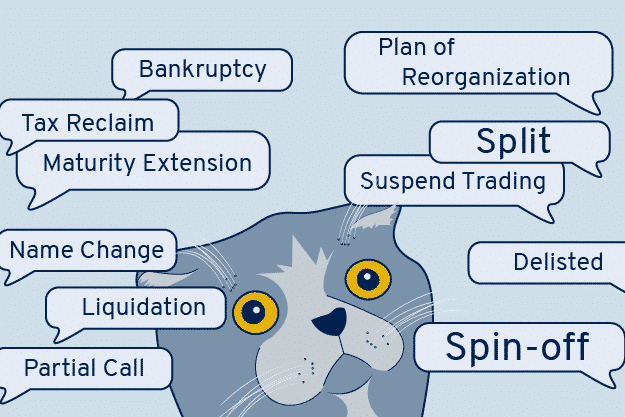An increase in corporate actions activity is a near-certainty in the financial markets as they deal with and reflect the coronavirus crisis. That increase will likely be seen in increased takeovers, mergers or stock splits, as companies in a variety of industries have to restructure because of the damage the crisis is doing to their line of business.
The ripple effect of Corporate Actions
Corporate actions include a variety of events, such as shareholder votes, but takeovers and mergers are already more complex than other types of actions, such as simply marking a dividend. Take, for instance, the recent spinoff of the Carrier and Otis companies by United Technologies. This action created three separate companies, but when looking at their stock price or trading data, new identifiers have to link to the old security and identifier for United, the parent company, and keep historical data consistent.
Holders of these companies’ securities have to manage figures such as the percentage of each security in their portfolio, to make sure it is in keeping with their investment mandate or regulatory requirements. If one of the spun-off companies no longer counts toward that because it’s now in a different sector, or making a different product, but the other two companies still are, that must be tracked and managed. Your firm’s compliance guidelines may not allow investment in a different industry than that of the parent company.
For keeping historical data consistent, an investor may need to track the last 10 years of performance for Carrier. To do so, that investor has to take care to match data from its first year as a new entity with the previous nine years under United Technologies – in 2010, Carrier effectively didn’t exist as a standalone security.
Corporate Actions in a crisis market
With all this complexity in mind, let’s look at how a crisis-fueled spike in corporate actions can impact data processing, raise demands on firms’ personnel who work with these actions, and require process improvements to keep up.
Several reference data attributes (part of a security master for a financial security) can be affected by a corporate action. An increase in corporate actions will mean an increase in changes to these attributes, all of which will have to be processed for a firm’s holdings, just as pricing data did in the United Technologies example. These attributes include coupon payments, the nature of a corporate debt such as investment grade, high yield or distressed debt, and the factor payments that need to be made on this debt.
Before this crisis, data managers at firms without enterprise data management (EDM) platforms typically dedicated five to six hours a day managing corporate actions by checking what upcoming actions are, how many need to be processed, how many will be executed and how many need to be prepared for later action. These managers would typically see seven to 10 corporate actions each day, for which they also had to assess their impact on trading positions, transactions, instruments, time-series data and portfolio valuations.
A crisis-fueled increase in corporate actions will increase the number of daily hours necessary to manually manage these actions, adding to the business case for an EDM platform with corporate actions capability as part an efficient operations landscape.
Getting it right matters
Beyond accurate and complete management of corporate actions data, ancillary and downstream aspects of corporate actions processing, such as downstream accounting and risk, analytics and compliance systems, will increase the demands on firms’ back offices. Paying attention to the front lines of handling corporate actions can prevent confusion and mistakes down the line.


